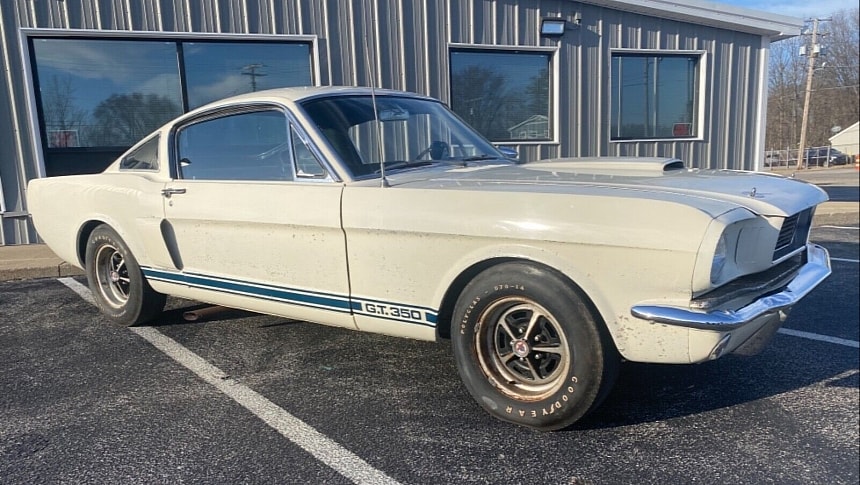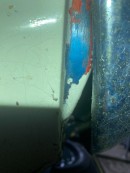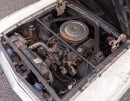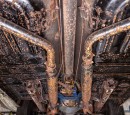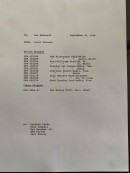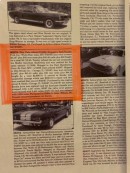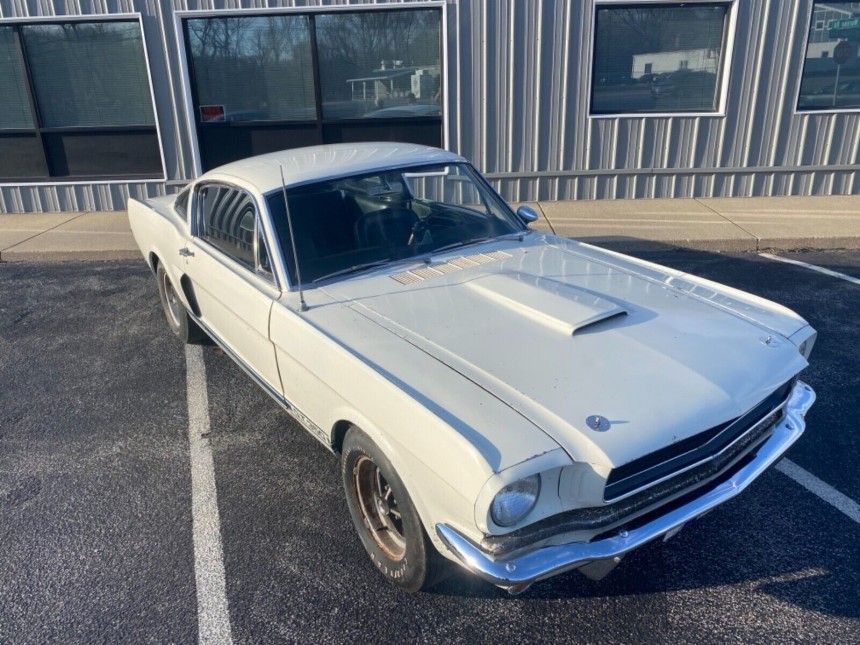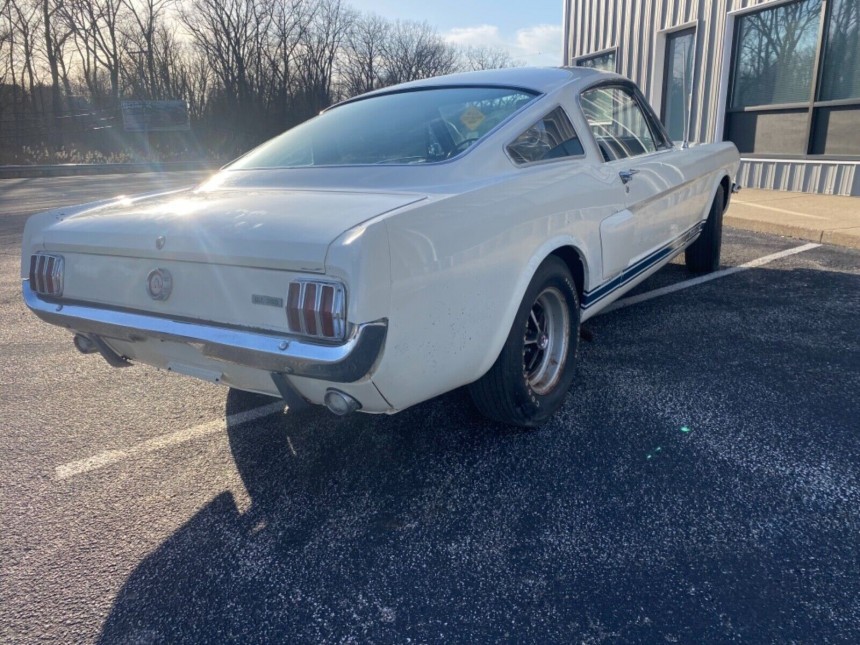The GT350 was the racehorse sired by a mule that Shelby American delivered in 1965 at the express request of Lee Iacocca. The sports car for secretaries had little to no chance of ever becoming a performance nameplate – at least, not in the eyes of Carroll Shelby – but Ford’s boss didn’t take no for an answer.
The artisan of Ford’s Le Mans triumphs over Ferrari was heavily tied to the Blue Oval even before the ambitions of Henry Ford II led to the Ferrari massacre of 1966 (and the following three years). The Shelby Mustang is split into two eras: the Caroll years (1965-1967) and the Ford period (from 1967 to the discontinuation of the first-gen Shelby Mustangs in 1969/1970)
Some of the most loyal fanatics of the nameplate would argue that the original 1965-1966 editions are the true icons, fetching high dollars at public or private sales. However, even among the thoroughbreds from the early days of the Shelby Mustang, some examples will draw attention more than their siblings. This one, offered for sale on eBay, sat for four decades. It was purchased in 2012 from its second owner, who hadn’t driven it since the 80s.
It also bears the distinction of being the last production car from the 1966 model year to be “built, sold, and shipped” by Shelby (according to the seller). The unique Shelby is currently located in Michigan City, Indiana, and it needs some work before it can be put back on the road.
The first iteration of the Shelby Mustangs carried the GT350 badge for 1965 and 1966 and a 289 cubic inch “HiPo” K-code V8 engine. The 4.7-liter small-block could fire 306 hp, a hefty jump upward from the regular 271-hp performance of the best of the factory Ford Mustangs. Part of the wizardry was hidden in plain sight as a high-rise intake manifold.
Ford dispatched Mustang fastbacks to the Shelby factory in California with their stock engines and four-speed manual transmissions mated to a 9-inch rear end. Among the Shelby add-ons, the most striking were the headers, front disc brakes, or larger rear drum brakes (borrowed from the Galaxie 500). In 1966, automatic transmissions became available alongside the traditional three-pedal units.
For the first year of the GT350, the old Ford saying, ‘The customers can have any color they want as long as it’s black,’ was reinterpreted in a slightly brighter form. All ‘65s were painted Wimbledon White, but in the ‘66s, a choice of liveries became available – including the Sapphire Blue that the car in our story left the factory with.
However, at some point in its life, it was sprayed white by the previous owner – so much for survivor status. Shelby American had a production run of 1,373 fastbacks in 1966 (if we count the 252 units left over from 1965 that were revamped as ‘66s). Also, the Hertz rentals are left out of this roll call - the number would otherwise total 2,378.
After the current owner and seller of this intriguing Shelby Mustang purchased it a dozen years ago, it modified its aspect slightly – with the help of soap and water, giving it a cleansing treatment to wash off the tree decades of storage dust and dirt. The car looks rust-free and well-maintained (the surface red hue on the bottom is only superficial and expected after 59,920 miles / 96.411 km added between 1966 and the early 80s).
Also, the interior looks amazingly fresh – consistent with the car’s apparel. The drivetrain is numbers-matching, but there’s no telling about its condition, as no attempt has been made to get it to run. The good news is that the motor isn’t seized and turns by hand. The seller states that the Ford has been attested by the Shelby Registry (both Ford and Shelby VINs).
Documentation of the car’s provenance and history will accompany the sale – something mandatory when the asking price is $350,000 – or best offer. At the moment of writing, the bid is ten days from closing. Just under a month ago, the car in its ‘As Found’ failed to sell on another online auction website, with the highest offer of $263,000 failing to meet the reserve. At this point, the seller reveals that the car was valued at half a million bucks.
The 1966 Ford Shelby Mustang GT350 entered production in August 1965, with many similarities of first-year design cues. Still, it also received plexiglass rear quarter windows, smaller wheels, a fold-down rear seat, and more than one exterior color.
This example offered for sale here is allegedly the last 1966 GT350 produced for the general public. It’s also the previous fastback assembled in the model year lineup - only four 1966 GT350 convertibles were put together after this car was finished. Still, all the drop-tops were for private distribution.
Some of the most loyal fanatics of the nameplate would argue that the original 1965-1966 editions are the true icons, fetching high dollars at public or private sales. However, even among the thoroughbreds from the early days of the Shelby Mustang, some examples will draw attention more than their siblings. This one, offered for sale on eBay, sat for four decades. It was purchased in 2012 from its second owner, who hadn’t driven it since the 80s.
It also bears the distinction of being the last production car from the 1966 model year to be “built, sold, and shipped” by Shelby (according to the seller). The unique Shelby is currently located in Michigan City, Indiana, and it needs some work before it can be put back on the road.
Ford dispatched Mustang fastbacks to the Shelby factory in California with their stock engines and four-speed manual transmissions mated to a 9-inch rear end. Among the Shelby add-ons, the most striking were the headers, front disc brakes, or larger rear drum brakes (borrowed from the Galaxie 500). In 1966, automatic transmissions became available alongside the traditional three-pedal units.
For the first year of the GT350, the old Ford saying, ‘The customers can have any color they want as long as it’s black,’ was reinterpreted in a slightly brighter form. All ‘65s were painted Wimbledon White, but in the ‘66s, a choice of liveries became available – including the Sapphire Blue that the car in our story left the factory with.
After the current owner and seller of this intriguing Shelby Mustang purchased it a dozen years ago, it modified its aspect slightly – with the help of soap and water, giving it a cleansing treatment to wash off the tree decades of storage dust and dirt. The car looks rust-free and well-maintained (the surface red hue on the bottom is only superficial and expected after 59,920 miles / 96.411 km added between 1966 and the early 80s).
Also, the interior looks amazingly fresh – consistent with the car’s apparel. The drivetrain is numbers-matching, but there’s no telling about its condition, as no attempt has been made to get it to run. The good news is that the motor isn’t seized and turns by hand. The seller states that the Ford has been attested by the Shelby Registry (both Ford and Shelby VINs).
The 1966 Ford Shelby Mustang GT350 entered production in August 1965, with many similarities of first-year design cues. Still, it also received plexiglass rear quarter windows, smaller wheels, a fold-down rear seat, and more than one exterior color.
This example offered for sale here is allegedly the last 1966 GT350 produced for the general public. It’s also the previous fastback assembled in the model year lineup - only four 1966 GT350 convertibles were put together after this car was finished. Still, all the drop-tops were for private distribution.
